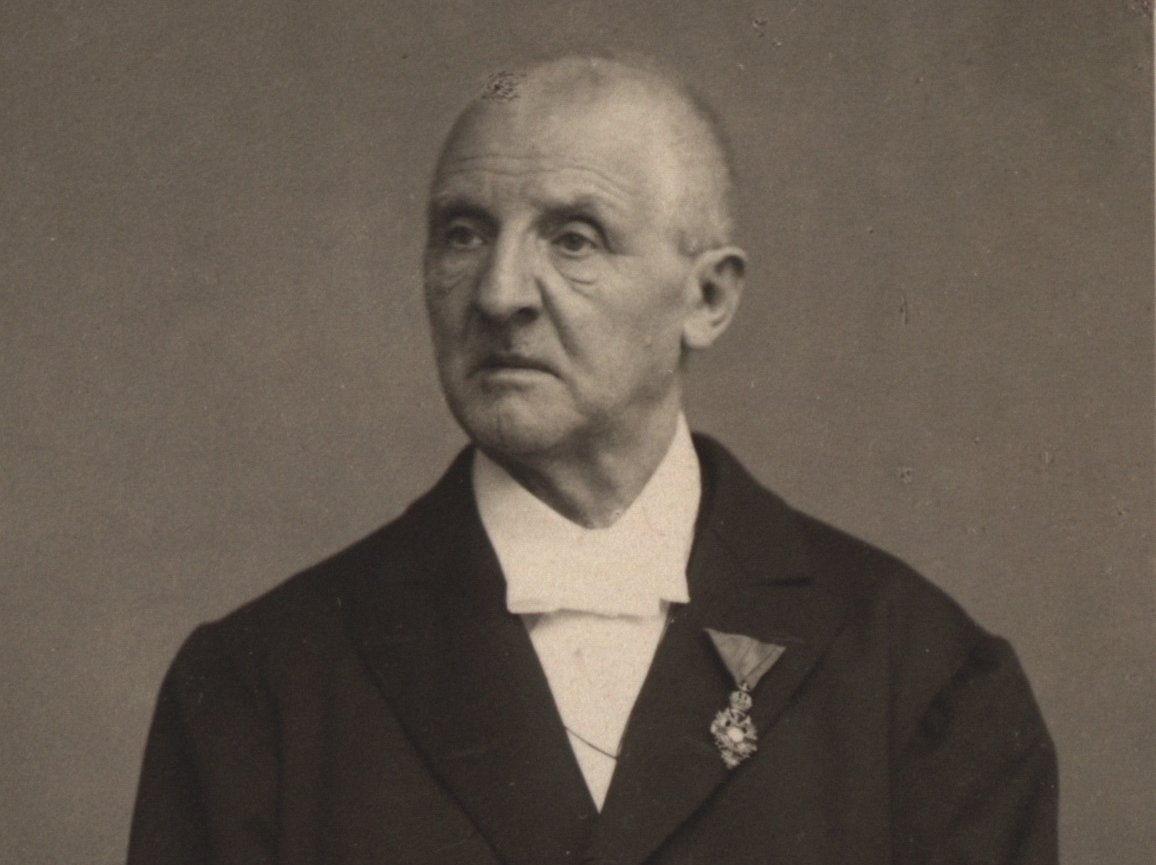
Today, concerts featuring Bruckner’s symphonies are among the Berliner Philharmoniker’s seasonal highlights, but this was not always the case. The orchestra’s first principal conductor, Hans von Bülow, consistently refused to perform Bruckner’s music.
Neither the orchestra itself nor Berlin audiences would have described their early encounters with Bruckner’s distinctive scores as love at first sight. The orchestra’s first performance of a Bruckner symphony was under Karl Klindworth on 31 January 1887. Although the Seventh is now considered the most successful of Bruckner’s symphonies, it received only a tepid response. The guiding light among living composers at that time was Johannes Brahms, many of whose works were performed each season; concerts that included any of Bruckner’s compositions, by contrast, can be counted on the fingers of one hand.
By the date of Bruckner’s death in October 1896 the Berliner Philharmoniker, which had been founded in 1882, had programmed only one more of the Austrian composer’s symphonies: the Third had been performed under the direction of the Brucknerian Hermann Levi in the autumn of 1893. But on this occasion, too, the response was muted, and as the performance wore on, the audience left the hall in increasingly large numbers. Bruckner’s Te Deum received a warmer reception when it was performed in 1891 and again in 1894. Bruckner travelled to Berlin from Vienna for both occasions, and was delighted with what he called the “brilliance of the performance”, thanking the conductor Siegfried Ochs repeatedly and asking him to convey his “feelings of the deepest respect” to the “ideal master, Hans von Bülow”. But the first principal conductor of the Berliner Philharmoniker, who was devoted to Brahms and highly critical of of Bruckner, was left unimpressed by this attempt at a rapprochement, and refused steadfastly to conduct even a single note of Bruckner’s music, famously dismissing the composer as “half genius, half simpleton”.
Only under Arthur Nikisch, who succeeded Bülow in 1895, did this situation change in any appreciable way. A native of Hungary, Nikisch had played the violin in the Viennese premiere of Bruckner’s Second Symphony in 1873, and eleven years later, he conducted the spectacular first performance of the Seventh with the Gewandhaus Orchestra in Leipzig. Throughout his life he remained a staunch and influential advocate of Bruckner’s music. In Berlin, too, Nikisch ensured – cautiously but consistently – that Bruckner’s music became central to the Philharmoniker’s repertoire. It was under his direction that the orchestra first performed the Second, Fourth, Fifth, Eighth and Ninth Symphonies – though he though he steered well clear of the First and the Sixth. By the date of Nikisch’s sudden death in January 1922, the orchestra had clearly established a Bruckner tradition that it now felt an obligation to uphold.
Wilhelm Furtwängler, a charismatic Brucknerian
The two conductors who effectively shaped the orchestra’s history over the next six decades confronted Bruckner’s music in differing ways. Furtwängler marked his debut as the orchestra’s principal conductor with a performance of the Seventh Symphony in October 1922. Four years earlier, he had conducted the Fourth, garnering praise from audience and critics alike; the performance sealed his reputation as a leading interpreter of Bruckner’s music. One reviewer wrote: “The way in which he animates the rhythms, breathing life into them, setting off the shades and tone colours with extraordinary precision, conducting (without a score!) with total control and imposing a compelling vision– this is not only admirable, it is also inspired. But his ability to fire up the players and compel their unquestioning commitment, allowing his effervescent temperament to communicate itself to the players, verges on the incredible.”
Between then and his death in 1954, Furtwängler regularly programmed Bruckner’s symphonies, excluding only the First and the Second from his repertoire, and conducting them not only in Berlin but also on tour, consolidating the Berliner Philharmoniker’s reputation as a Bruckner orchestra on the international stage.
Bruckner also played a key role during the Karajan era. In November 1954, only days before Furtwängler’s death, Karajan conducted two performances of Bruckner’s Ninth that triggered scenes of ecstatic jubilation, a reaction that presumably reinforced the orchestra’s decision to appoint him as its new principal conductor only a few weeks later. The influential critic Hans Heinz Stuckenschmidt wrote: “Karajan has a sense of overarching structure. His music-making stems from the phenomenon of the music’s actual sound, not from its rhythm or from the way in which the beats in a bar are distributed, both of which turn out to be merely secondary.”
“Tradition is not about preserving the ashes, but about fanning the flames,” runs a bon mot that probably derives from a speech by the French politician Jean Jaurès. In the case of Bruckner, the task of revisiting his works and of adopting a critical attitude to their performance tradition is particularly challenging, not least because of their complex genesis and the history of their transmission. Many of these symphonies exist in multiple versions, while their first editions were generally much revised, with cuts, instrumental retouchings and additional performance markings. Launched in 1951, the New Complete Edition set itself the task of “making every version available without offering any value judgements”. A third edition was taken in hand a few years ago on the basis of current research and of source material that has recently come to light. There are now two competing critical editions in progress.
A new perspective on Bruckner
Simon Rattle’s engagement with Bruckner’s symphonies is notable for its combination of respect for existing performance traditions with a new vitality, offering a fresh perspective on the works. Unlike Claudio Abbado, who rarely conducted Bruckner’s music during his time as principal conductor, Rattle programmed the Ninth Symphony at the very start of his first season in 2002/03. Ten years later he demonstrated just how much can still be discovered in this late, unfinished masterpiece. In February 2012, he and the Berliner Philharmoniker performed a four-movement version of the Ninth in Berlin and New York, with a final movement based on Bruckner’s surviving manuscripts. In its new guise, this movement revealed not only Bruckner’s genius but also a number of unsettling details. Rattle observed: “Everything that is strange about this finale is 100% Bruckner. And one can see the terror and the fear and the passion which he was going through in his life at that time.”

The intimate strangers
Bruckner and Mahler were titans. Both men were symphonists whose works were unprecedented in their length. They had neither predecessors nor successors. They were close and simultaneously distant. A closer look at the lives of these two disparate symphonists.

The Misfit
Anton Bruckner was always an outsider in Vienna’s polite society. Who was this “mifit” and what motivated him? In search of the evidence.

Beware of acoustic incense
Herbert Blomstedt in conversation about Anton Bruckner